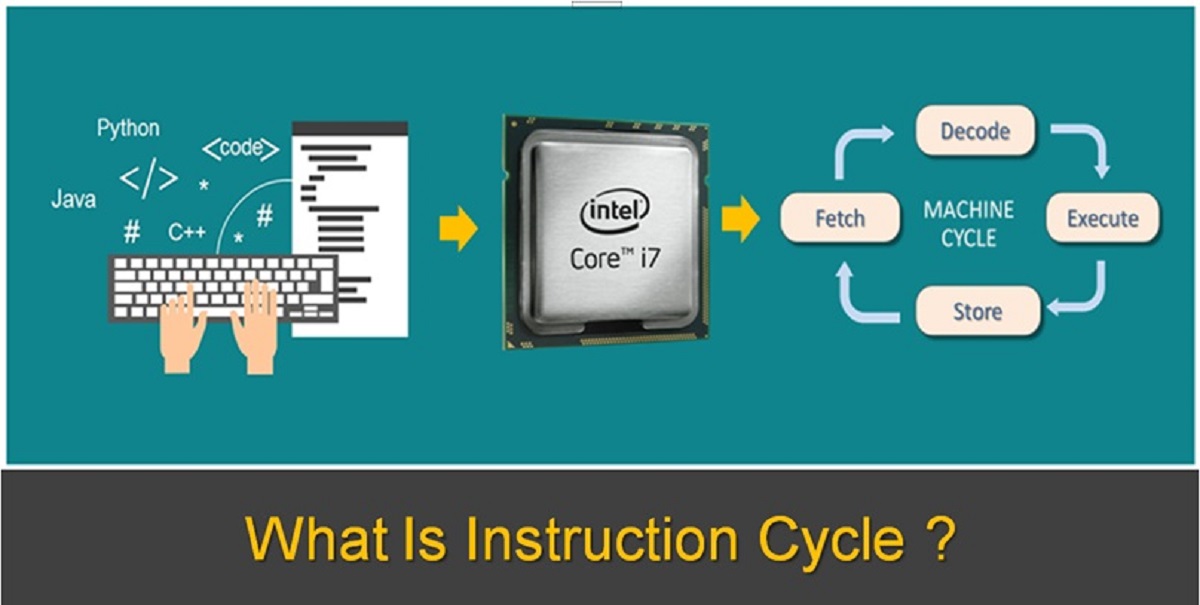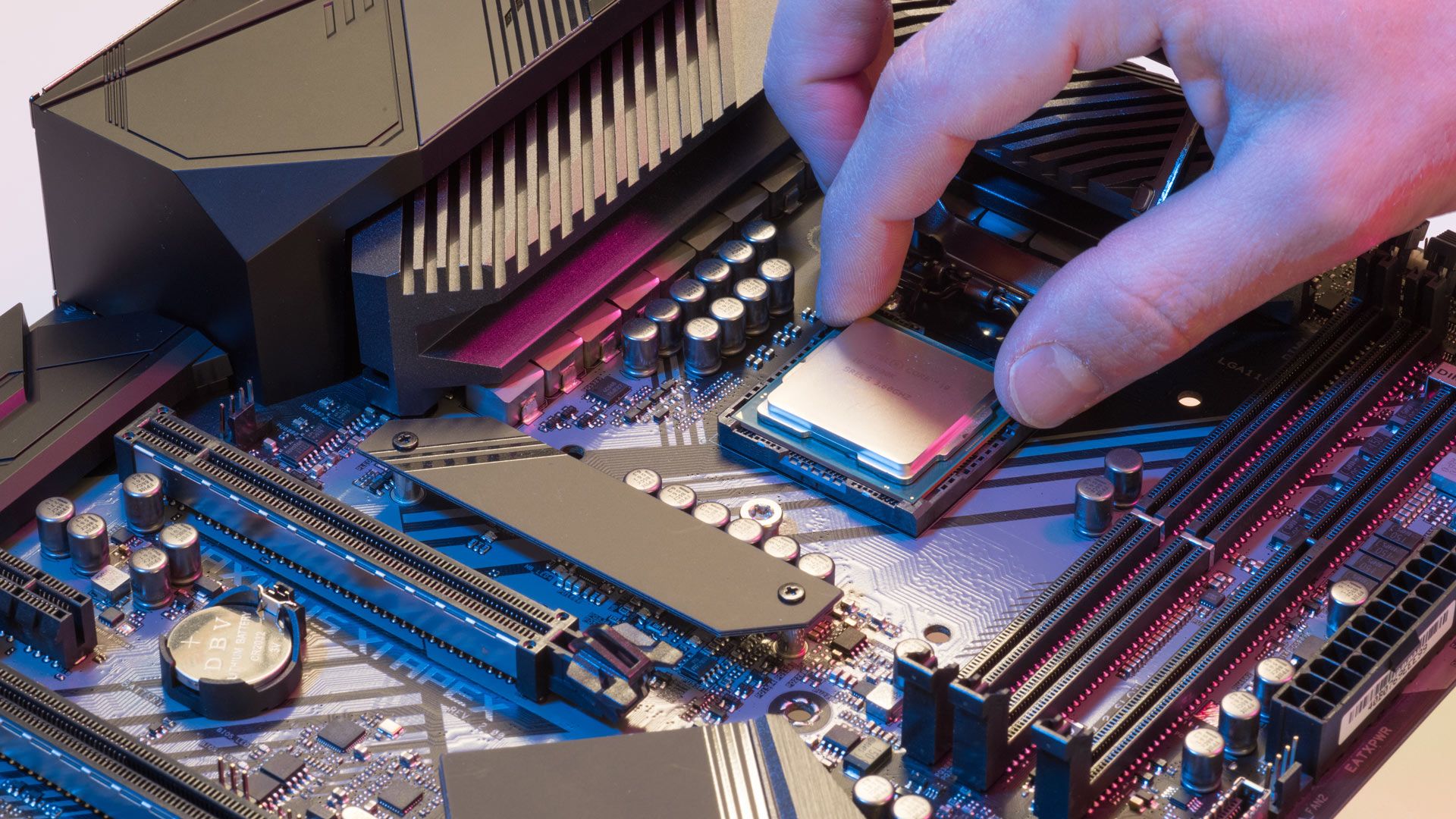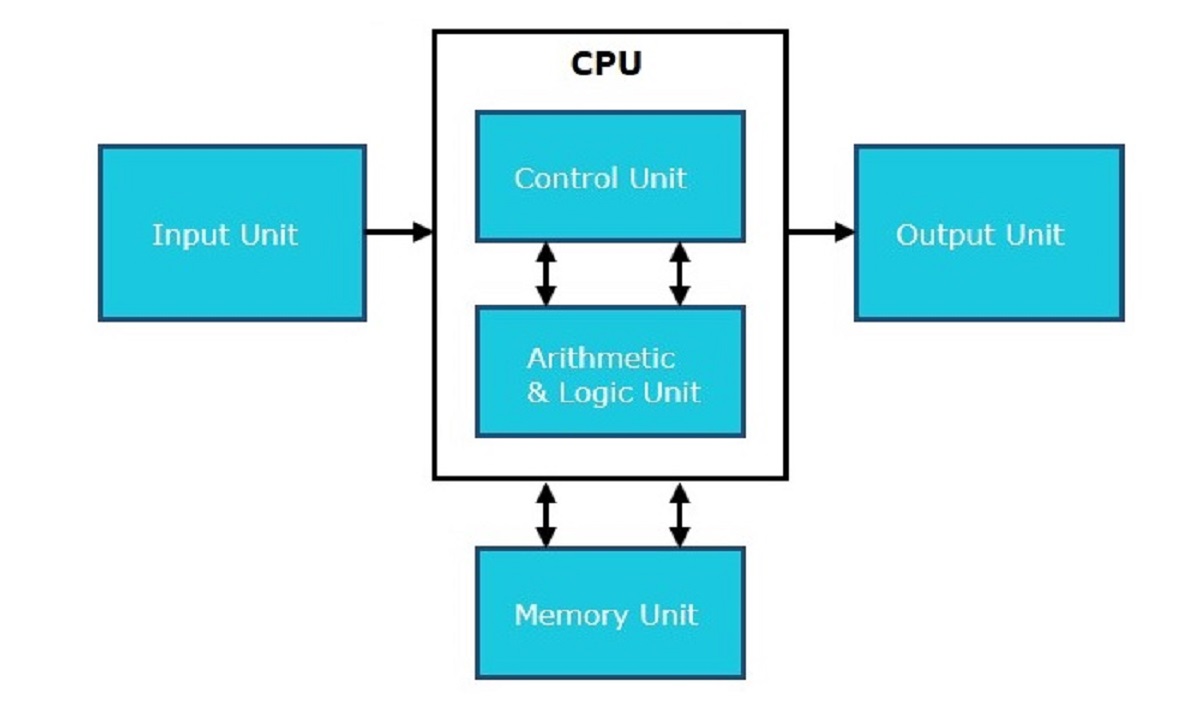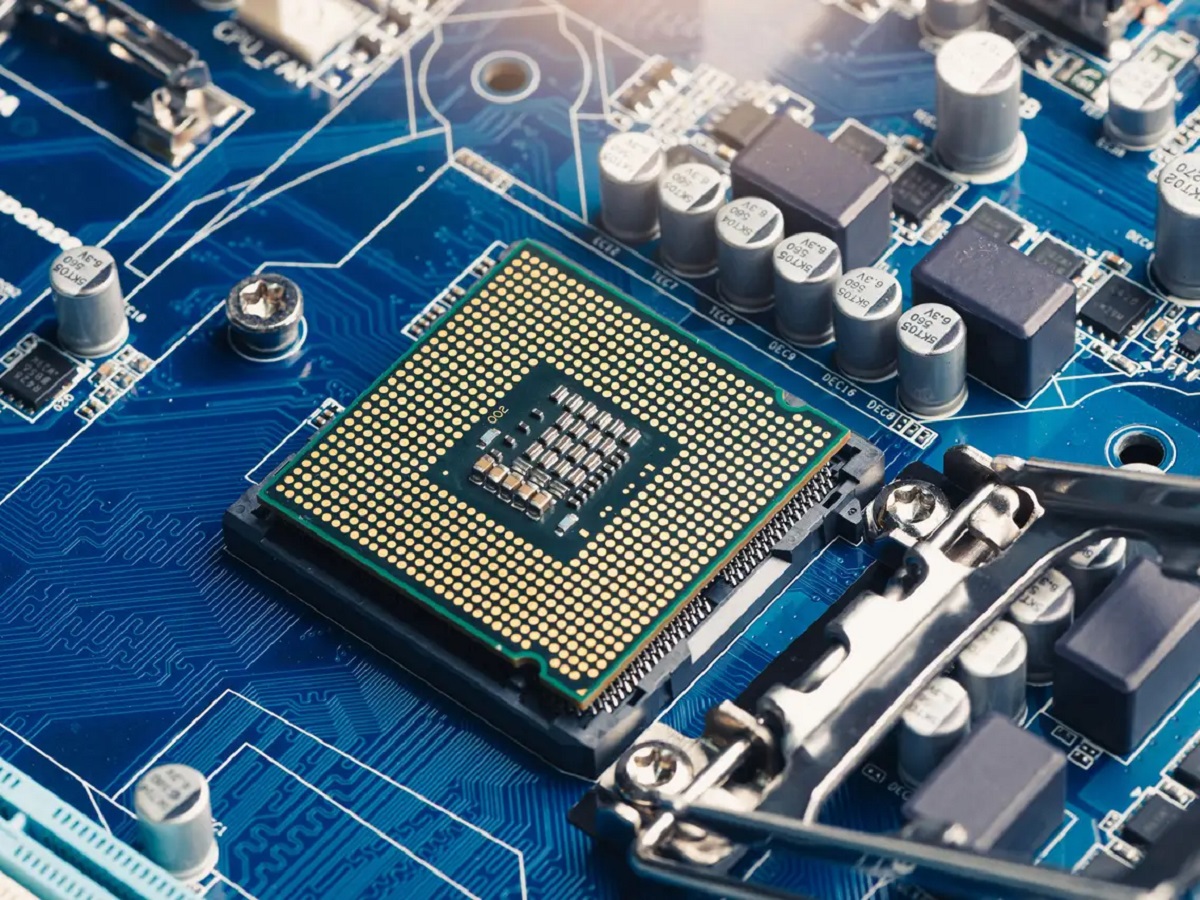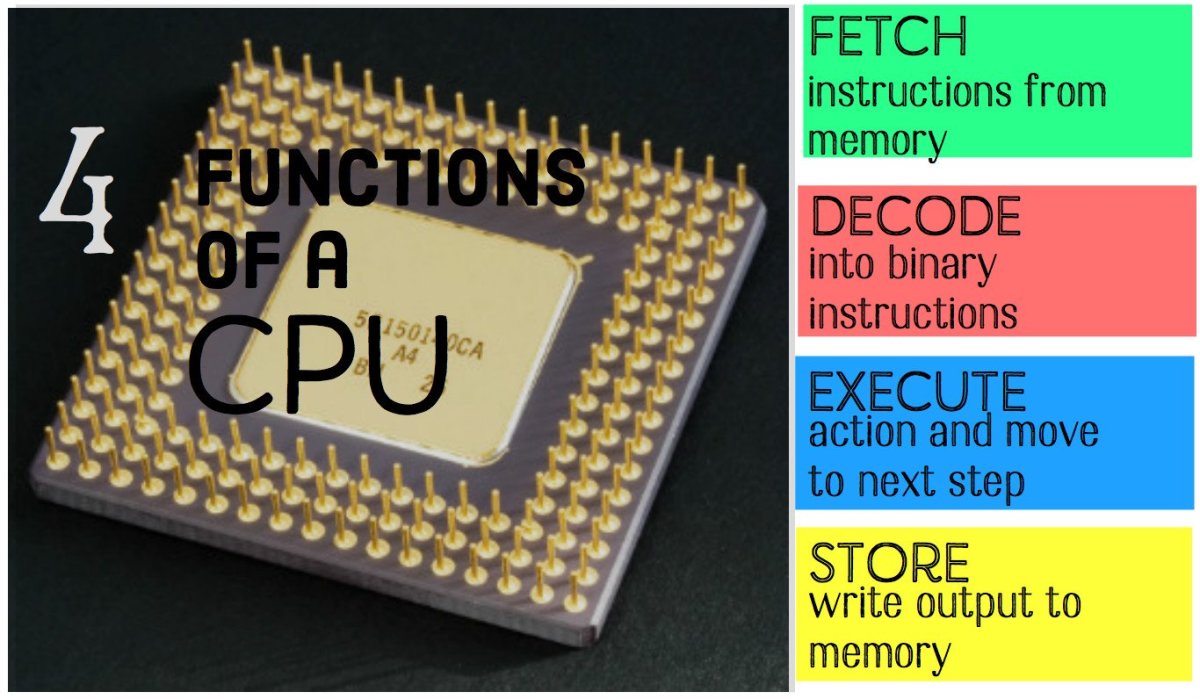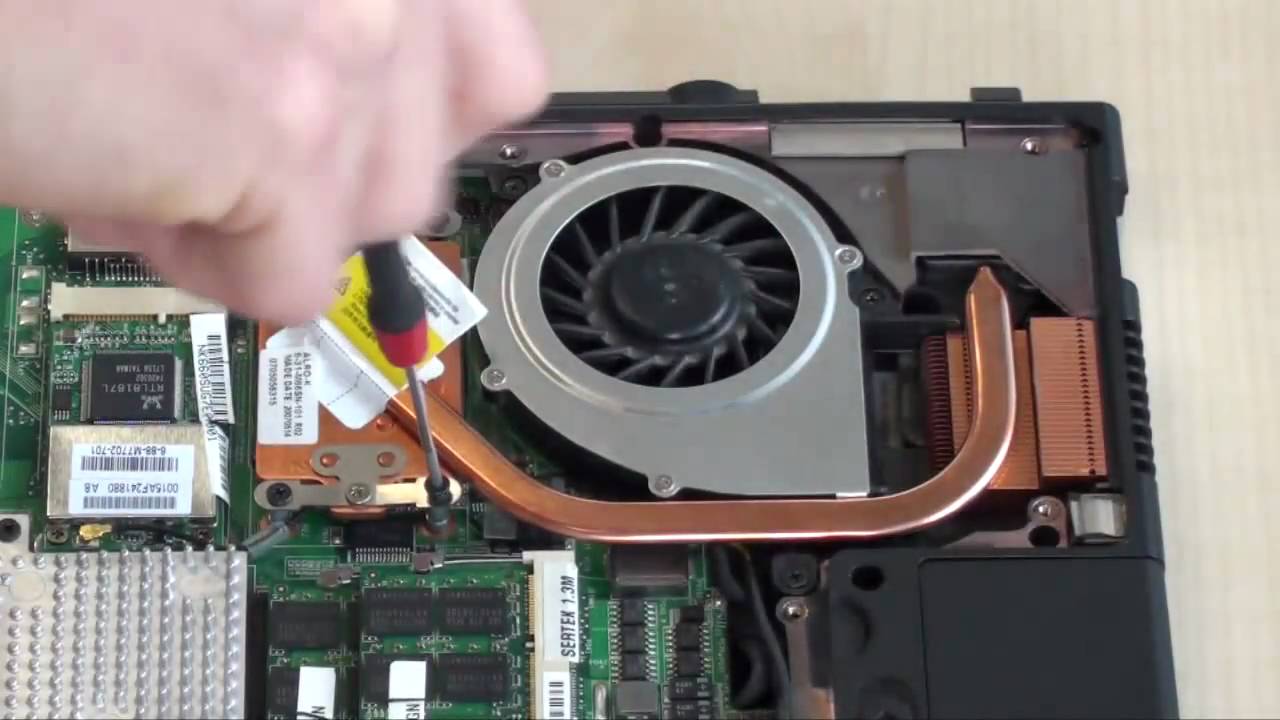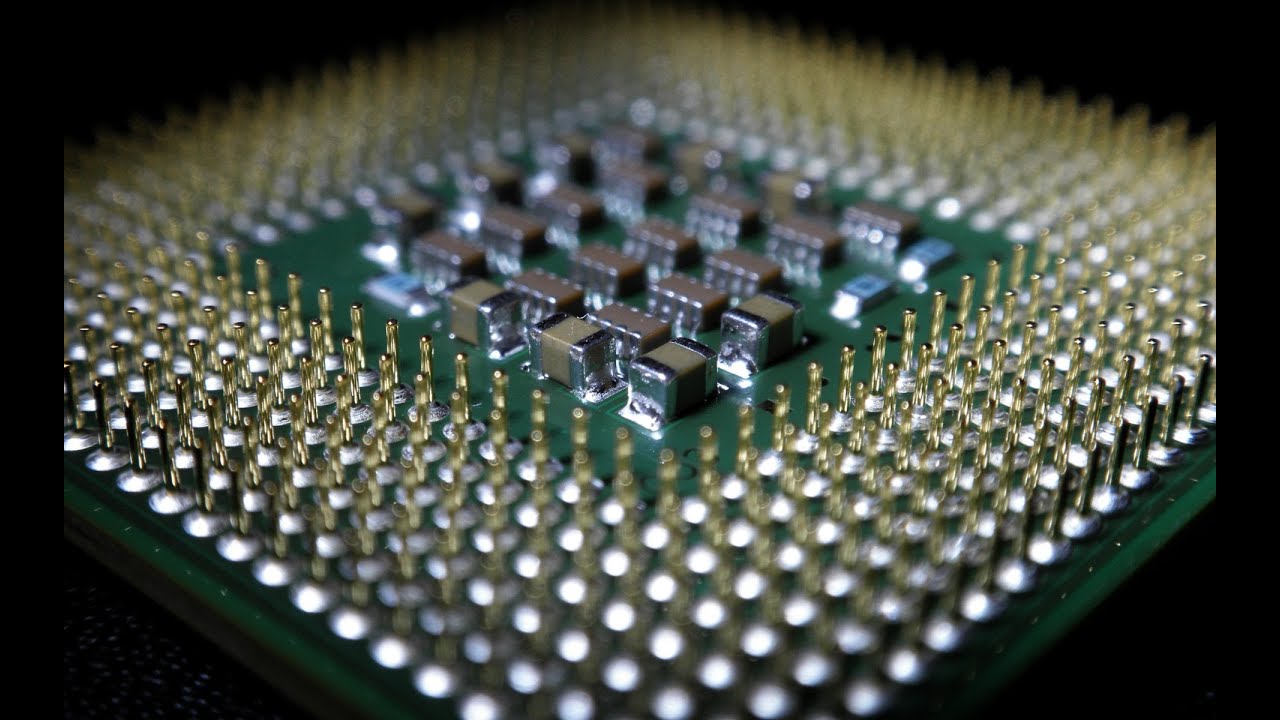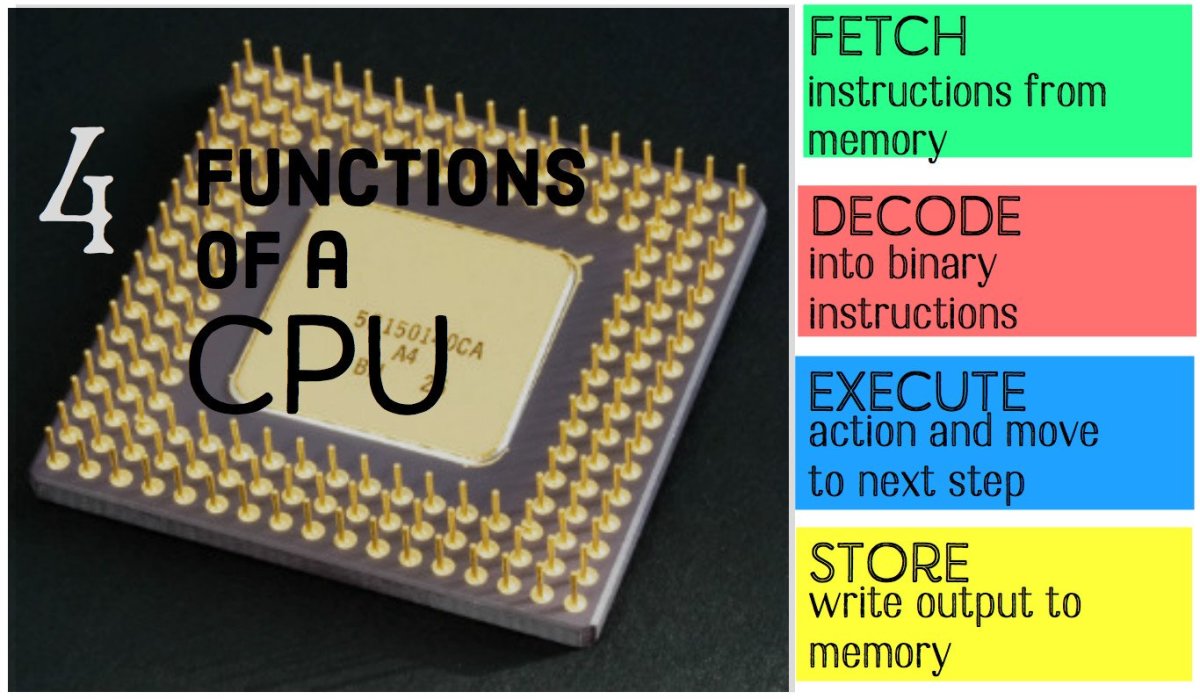Introduction
Welcome to the fascinating world of computer processors, where humongous amounts of data are meticulously processed and translated into meaningful output. At the heart of this data processing journey lies the Central Processing Unit (CPU), an essential component responsible for executing instructions and facilitating the conversion of input into output.
The CPU is the brain of a computer system, overseeing the coordination and execution of various tasks that enable software programs to function. When it comes to input and output conversion, the CPU plays a crucial role in handling the flow of information between different components, such as input devices, memory, and output devices.
This article aims to delve into the intricacies of how a CPU executes instructions as it converts input into output. We will explore the key components and processes involved, shedding light on the inner workings of this vital piece of computer hardware.
Join us on this exciting journey as we unravel the mysteries behind the operation of CPUs and their role in the conversion of input into output.
The Role of a CPU in Input and Output Conversion
The CPU serves as the intermediary between input and output devices, enabling the conversion of raw input data into processed output information. It acts as the conductor, orchestrating the flow of data and instructions within a computer system.
When you interact with your computer, whether it’s typing on a keyboard, clicking a mouse, or speaking into a microphone, the CPU receives these input signals and converts them into a format that the computer can understand. It processes the input data and performs the necessary computations or manipulations to produce the desired output.
The CPU’s primary function in input and output conversion is to execute the instructions provided by software programs. These instructions, stored in memory, specify the operations to be performed on the input data. The CPU fetches these instructions from memory, decodes them, and executes them in a precise sequence.
During the execution process, the CPU interacts with various components to convert the input into output. One essential component is the Control Unit, responsible for managing the execution sequence of instructions and coordinating the flow of data within the CPU. It ensures that instructions are executed in the correct order and that the appropriate data is processed at each step.
The Data Path and Arithmetic Logic Unit (ALU) are also integral parts of the CPU in input and output conversion. The Data Path is a pathway within the CPU that facilitates the movement and manipulation of data. It consists of registers, which store temporary data, and buses, which transmit data between different components.
Within the Data Path, the ALU performs the mathematical and logical operations required to process the input data. It can perform tasks such as addition, subtraction, multiplication, and comparison, allowing the CPU to perform calculations and make decisions based on the input provided.
Register Files and memory are other key components that the CPU utilizes during input and output conversion. Register Files are small, high-speed storage areas within the CPU that hold data temporarily during processing. They allow for quick access to frequently used data, enhancing the efficiency of instruction execution.
Memory, on the other hand, serves as the long-term storage of data and instructions. It stores not only the instructions for the CPU to execute but also any data that needs to be processed. The CPU retrieves data from memory, performs the necessary computations, and stores the results back in memory or sends them to the appropriate output device.
Communication with input and output devices is facilitated through various interfaces and protocols. The CPU communicates with input devices such as keyboards, mice, and touchscreens to receive user input. It also interacts with output devices such as monitors, printers, and speakers, transmitting processed data for display or reproduction.
In essence, the CPU acts as the conductor, coordinating the complex symphony of input and output conversion within a computer system. Its role is pivotal in executing instructions, processing data, and facilitating seamless communication between the user and the computer.
The Instruction Execution Process
The instruction execution process is the heart of a CPU’s operation in input and output conversion. It involves a series of steps that enable the CPU to fetch, decode, and execute instructions to convert the input into the desired output.
The process begins with the Fetch phase, where the CPU retrieves the next instruction from memory. The program counter, a register that keeps track of the memory address of the next instruction, is incremented to point to the next instruction location. The CPU fetches the instruction from that memory location and loads it into the instruction register.
Once the instruction is fetched, the next step is the Decode phase. In this phase, the CPU determines the type of instruction and the operands or data on which the instruction should operate. The instruction decoder decodes the binary representation of the instruction, identifying the operation to be performed and locating the necessary data.
After decoding, the CPU proceeds to the Execute phase. Here, the actual operation specified by the instruction is carried out. This could involve arithmetic or logical operations, data manipulation, or control flow changes. The CPU utilizes the Data Path and the ALU to perform the necessary computations, manipulating the input data as required by the instruction.
During the Execute phase, the CPU may also need to access additional data from memory or registers. It retrieves the required data and performs any necessary calculations. The result of the operation is stored in the appropriate location, often in a register or memory for future use.
After executing the instruction, the CPU evaluates the condition or checks for potential changes in the program flow. This determines the next instruction to be fetched. If the execution leads to a branch instruction, which alters the program flow, the CPU updates the program counter to reflect the new instruction location.
This cycle of fetch, decode, execute, and potentially branch continues until all the instructions have been processed. The CPU diligently moves through the program, executing each instruction in sequence to convert the input into output.
Throughout the instruction execution process, the CPU relies on various components and subsystems to facilitate efficient and accurate execution. The Control Unit plays a crucial role in managing the instruction flow and coordinating the activities of different components within the CPU.
Overall, the instruction execution process is a highly coordinated and precise sequence of steps that the CPU performs to convert input data into meaningful output. It showcases the CPU’s ability to process instructions and manipulate data, ensuring that the desired results are achieved in input and output conversion.
The Function of the Control Unit
The Control Unit is a critical component of a CPU that plays a fundamental role in input and output conversion. It serves as the central coordinator, overseeing the execution of instructions and facilitating the flow of data within the CPU.
One of the primary functions of the Control Unit is to manage the instruction execution process. It ensures that instructions are executed in the correct order, following a sequential flow. The Control Unit fetches instructions from memory, decodes them, and determines the appropriate actions to be taken based on the instruction type.
During the instruction execution process, the Control Unit regulates the movement of data within the CPU. It controls the data path, which is responsible for the movement and manipulation of data during processing. The Control Unit signals the appropriate registers and pathways to transfer data between different components, such as the ALU or memory.
Additionally, the Control Unit is responsible for managing input and output operations. It coordinates the communication between the CPU and input devices, as well as output devices. When an input signal is received, the Control Unit directs the CPU to process the data accordingly. Similarly, when the CPU produces output, the Control Unit ensures that it is sent to the correct output device for display or further processing.
Another critical function of the Control Unit is managing the CPU’s internal timing and synchronization. It ensures that each component within the CPU operates in sync, preventing any data corruption or misinterpretation. The Control Unit generates the necessary control signals and timing pulses to coordinate the activities of different components, ensuring that instructions are executed accurately and efficiently.
Furthermore, the Control Unit is responsible for handling exceptions and interrupts. In input and output conversion, exceptions can occur when there are errors or unexpected events that require immediate attention. The Control Unit detects these exceptions and takes the necessary actions, such as halting the current instruction execution or redirecting the flow of control to a specific routine.
Overall, the Control Unit serves as the control center of the CPU, managing the instruction flow, coordinating data movement, and overseeing input and output operations. It ensures that the CPU operates smoothly, executing instructions accurately and efficiently to convert input into the desired output.
The Data Path and ALU
The Data Path and Arithmetic Logic Unit (ALU) are essential components within a CPU that play a crucial role in input and output conversion. They work together to process data, perform computations, and manipulate information according to the instructions provided by the Control Unit.
The Data Path serves as a pathway within the CPU that facilitates the movement and manipulation of data during processing. It consists of various components, such as registers and buses, which enable the smooth flow of data between different parts of the CPU.
Registers within the Data Path are small, high-speed storage areas that temporarily hold data during processing. Registers provide quick access to frequently used data, reducing the need to fetch data from memory repeatedly. They serve as temporary storage locations for intermediate results, operands, and control signals.
Buses in the Data Path act as conduits for data transfer, allowing data to move between different components within the CPU. There are various types of buses, including the data bus, control bus, and address bus. The data bus carries data between the CPU and memory or input/output devices, while the control bus transmits control signals to coordinate operations. The address bus specifies the memory address for data retrieval or storage.
The ALU, on the other hand, is the computational powerhouse within the CPU. It performs mathematical and logical operations required to process the input data and convert it into meaningful output. The ALU can perform tasks such as addition, subtraction, multiplication, division, comparison, and bitwise operations.
Using the data provided by the Data Path, the ALU executes the specific operation specified by the instruction fetched and decoded by the Control Unit. It uses arithmetic circuits, logic gates, and other logical elements to manipulate and transform the data, producing the desired result.
For example, when a computer program requires the addition of two numbers, the Control Unit fetches the appropriate instruction from memory and decodes it. The Data Path retrieves the two numbers from registers and transfers them to the ALU. The ALU then performs the addition operation, combining the two numbers and producing the sum.
In addition to basic arithmetic operations, the ALU can handle more complex operations, such as multiplication and division. It can also perform logical operations, such as AND, OR, and NOT, which are essential for decision-making and data manipulation.
The Data Path and ALU work hand in hand to process data and execute computations, ensuring that the input provided to the CPU is transformed into meaningful output. Their coordinated efforts enable the CPU to perform a wide range of operations, making it a powerful tool for input and output conversion.
Register Files and Memory
Register Files and memory are crucial components within a CPU that contribute to the efficient execution of instructions and the conversion of input into output.
Register Files are small, high-speed storage areas located within the CPU. They consist of multiple registers, each capable of holding a fixed amount of data. Register Files function as temporary storage locations for data during the execution of instructions.
Registers are used to hold operands, intermediate results, and control signals. As the CPU executes instructions, it fetches data from memory and stores it in registers for efficient access during computation. Register Files provide fast and direct access to frequently used data, reducing the need to retrieve data from memory repeatedly.
The number and size of registers in a Register File vary depending on the CPU architecture. Generally, a CPU will have several general-purpose registers that can store any type of data. Specialized registers, such as instruction registers, program counters, and status registers, are also employed to handle specific functions within the CPU.
Memory, on the other hand, serves as long-term storage for data and instructions. It allows the CPU to store large amounts of data that may not fit into registers. Memory is organized into individual cells or addresses, each capable of holding a fixed amount of data.
During the instruction execution process, the CPU retrieves instructions and data from memory as needed. Instructions specify the operations to be performed, while data represents the input to be processed. The CPU fetches these instructions and data from memory and stores them in registers or utilizes them directly as needed.
Memory is essential in input and output conversion because it stores not only the instructions but also the data required for processing. The CPU retrieves data from memory, performs the necessary computations or manipulations, and stores the results back in memory for further processing or output.
The speed at which the CPU can access memory plays a crucial role in overall system performance. CPU architectures employ various mechanisms, such as caches and memory hierarchies, to optimize memory access. These mechanisms aim to minimize the time taken to fetch data from memory, allowing for faster and more efficient instruction execution.
In summary, Register Files and memory work together to enable effective data storage and retrieval within a CPU. Register Files provide quick access to frequently used data, enhancing the CPU’s efficiency. Meanwhile, memory serves as the long-term storage of instructions and data, allowing for larger storage capacity and a wider range of computations. Together, they play a vital role in facilitating input and output conversion within a computer system.
Communication with Input and Output Devices
In the world of input and output conversion, the CPU serves as the bridge between the computer system and various input and output devices. Communication between the CPU and these devices is crucial for transferring data, enabling user interactions, and producing the desired output.
The CPU interacts with input devices, such as keyboards, mice, touchscreens, and scanners, to receive input from the user. When you press a key on your keyboard, for example, the keyboard sends a signal to the CPU indicating which key was pressed. The CPU processes this input data and determines the appropriate actions to take based on the specific application’s requirements.
Output devices, on the other hand, allow the computer to display information, produce sound, or generate printed documents. Monitors, speakers, printers, and graphical displays are all examples of output devices. Once the CPU has processed the input data and performed the necessary computations, it sends the processed data to the respective output device for display, reproduction, or further processing.
Communication between the CPU and input and output devices occurs through various interfaces and protocols. These interfaces provide the necessary pathways for data transfer and control signals between different components.
One commonly used interface for communication is the Universal Serial Bus (USB). USB interfaces enable high-speed data transfer between the CPU and a wide range of input and output devices. USB devices, whether they are keyboards, mice, printers, or external storage devices, connect to the CPU via USB ports, allowing for seamless data transfer and device control.
Other interfaces, such as HDMI (High-Definition Multimedia Interface), VGA (Video Graphics Array), and audio jacks, facilitate the communication between the CPU and output devices such as monitors and speakers. These interfaces carry both video and audio signals, allowing for the display of visuals and the reproduction of sound produced by the CPU.
Furthermore, network interfaces, such as Ethernet or Wi-Fi, enable communication between the CPU and remote devices over a network. This allows for network-based input and output operations, such as accessing files on a remote server or sharing data with other devices connected to the network.
The CPU relies on device drivers and software protocols to communicate effectively with individual input and output devices. Device drivers provide the necessary instructions for the CPU to interact with specific devices, allowing for seamless data transfer and input/output operations. These drivers ensure compatibility, data integrity, and efficient utilization of the connected devices.
Overall, communication with input and output devices is a vital aspect of input and output conversion. The CPU’s ability to interact with various devices, process input data, and produce the desired output greatly enhances the functionality and usability of a computer system.
Factors Affecting CPU Performance in Input and Output Conversion
The performance of a CPU in input and output conversion is influenced by several key factors. These factors can impact the speed, efficiency, and overall effectiveness of the CPU in handling input and producing output. Understanding these factors is crucial for optimizing the performance of a computer system.
1. Processor Speed: The clock speed or frequency of the CPU plays a significant role in determining its performance. A higher clock speed allows the CPU to execute instructions and process data at a faster rate, resulting in quicker input and output conversion. Overclocking can also be used to increase the processor speed, but it can lead to higher power consumption and heat generation if not managed carefully.
2. Number of Cores: Multi-core CPUs have multiple processing units, allowing them to execute multiple instructions simultaneously. This parallel processing capability enhances the CPU”s ability to handle input and output conversion tasks efficiently. Applications specifically designed to utilize multiple cores can see a substantial improvement in performance.
3. Cache Size: CPU cache is a small but extremely fast memory located on the CPU chip. It stores frequently accessed data, instructions, and intermediate results, reducing the need to fetch data from slower main memory. A larger cache size improves the CPU’s ability to quickly retrieve and store information, thereby boosting input and output performance.
4. Memory Bandwidth: The speed at which data can be transferred between the CPU and memory affects input and output conversion performance. A higher memory bandwidth allows for quicker data access and retrieval, facilitating faster execution of instructions. Upgrading to faster RAM or utilizing dual-channel memory configurations can help enhance memory bandwidth.
5. Data Transfer Interfaces: The efficiency of the communication interfaces between the CPU and input/output devices impacts overall performance. Faster interfaces, such as USB 3.0 or Thunderbolt, can significantly improve data transfer rates, reducing latency and enhancing input and output conversion speed.
6. Software Optimization: Well-optimized software can improve the CPU’s performance in input and output conversion. Efficient algorithms, streamlined code, and appropriate utilization of multithreading techniques can minimize unnecessary computations, reduce waiting times, and enhance overall system responsiveness.
7. Storage Technology: The type of storage devices used can affect input and output performance. Solid-state drives (SSDs) generally offer faster data access compared to traditional hard disk drives (HDDs), resulting in improved input and output conversion speed. Using fast storage devices can help reduce data retrieval and transfer times, enhancing overall CPU performance.
8. System Configuration: The overall configuration of the computer system, including the CPU, memory, storage, and input/output devices, can impact performance. Proper balance and compatibility between these components are essential to ensure optimal input and output conversion. An underpowered component can result in a bottleneck that limits overall system performance.
It is important to note that each computer system may be subject to unique constraints and optimizations based on specific usage scenarios and requirements. Fine-tuning these factors in combination with thorough benchmarking and testing can help achieve the best performance in input and output conversion tasks.
Conclusion
The CPU plays a critical role in the conversion of input into output, serving as the driving force behind a computer system’s ability to process data and produce meaningful results. Through its various components, such as the Data Path, ALU, Control Unit, Register Files, and memory, the CPU executes instructions, performs computations, and manages data to accomplish input and output conversion.
The instruction execution process, facilitated by the Control Unit, ensures that instructions are fetched, decoded, and executed in a precise sequence. The Data Path and ALU work together to manipulate data and carry out the necessary calculations, converting the input data into the desired output. Register Files and memory provide temporary and long-term storage, respectively, where information is held and retrieved during processing.
Efficient communication between the CPU and input and output devices is achieved through various interfaces and protocols. By interacting with input devices, the CPU receives user input, while output devices allow the CPU to display information or reproduce data in a usable format.
Several factors influence CPU performance in input and output conversion. Processor speed, the number of cores, cache size, memory bandwidth, data transfer interfaces, software optimization, storage technology, and system configuration all affect the CPU’s ability to efficiently handle input and output tasks.
Understanding these factors and their impact on CPU performance is essential for optimizing a computer system’s input and output conversion capabilities. By considering the appropriate hardware configurations, software optimizations, and data transfer techniques, users can enhance the overall performance and responsiveness of their systems.
In conclusion, the CPU serves as the computational powerhouse that transforms input data into meaningful output, driving the functionality and usability of a computer system. Its intricate components and processes work together harmoniously, allowing for efficient and seamless input and output conversion.







